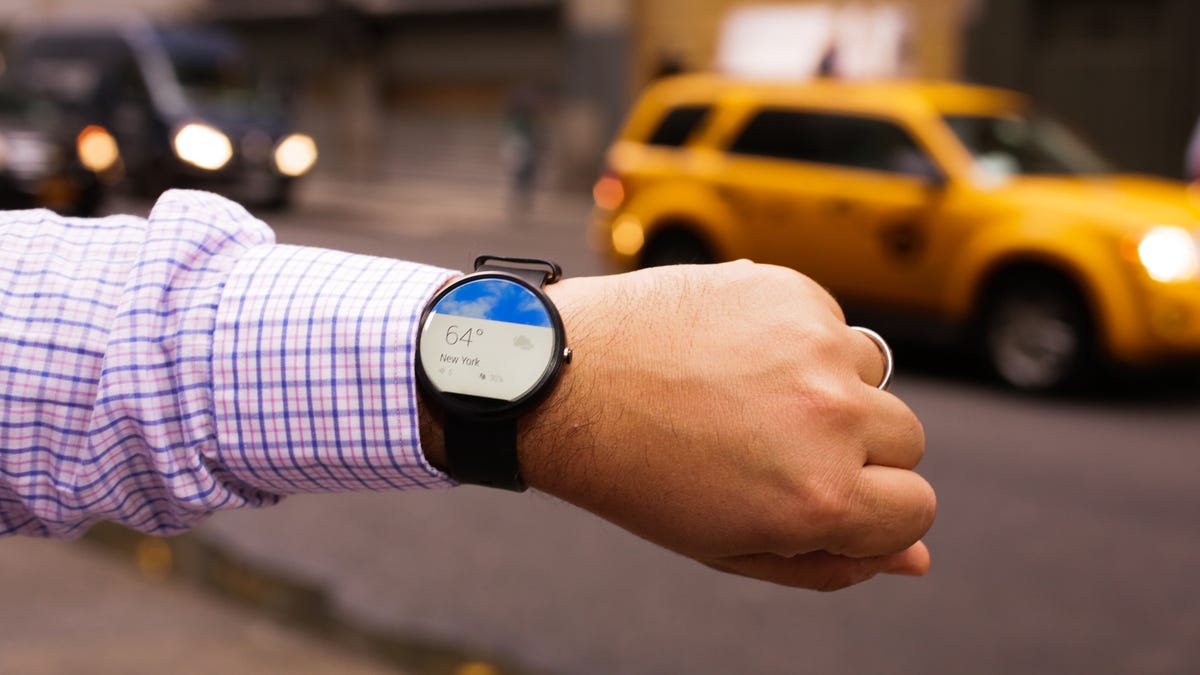
Sarah Tew/CNET
The first figures are in for devices running Google’s Android Wear operating system — and they’re lagging behind the wearable market’s less flashy and feature-packed gadgets by a wide margin.
Google’s OS for smartwatches and other wearables grabbed 15.6 percent of the total “smart wearable bands” market in 2014, according to a report published Wednesday by research firm Canalys, with the six Android Wear devices collectively shipping 720,000 units of the total 4.6 million units sold last year.
Canalys defined smart wearable bands as devices that can run third-party applications. By and large that includes only smartwatches from Android Wear partners such as Motorola; Samsung’s Tizen-powered devices; non-Android Wear devices from Sony, Basis and other wearable makers; and startup Pebble’s smartwatch.
Chris Jones, an analyst and vice president at Canalys, said Android Wear’s showing in the market fell below Google’s expectations.
“We think it would be under where they were hoping to be by the end of the year,” Jones said in an interview. Because of its heavy focus on notifications that drain battery life, Jones added, Android Wear doesn’t appear optimized for wearables until its developers improve how people use the OS and for how long.
Motorola’s round-faced Moto 360 smartwatch was the clear leader among Android Wear gadgets, the report said, despite supply issues constraining the number of devices the company was able to ship last year. Other gadgets running Android Wear beyond the Moto 360 include LG’s G Watch and G Watch R, the Sony SmartWatch 3, Asus’ ZenWatch and Samsung’s Gear Live.
A second category is what Canalys calls “basic wearable bands.” Those include products from wristband makers Jawbone, Fitbit, Garmin and Polar, as well as a number of other companies that have entered the fray with new wearables of their own, including gaming-hardware company Razer and Chinese smartphone company Xiaomi. Fitbit remains the leading seller in the basic category with Xiaomi catching up fast, thanks to a successful launch of its Mi Band, Canalys said. Basic wearble bands run only proprietary software and often don’t contain screens. Gadgets running Android Wear aren’t included in the category.
While makers of smart wearable bands shipped 4.6 million units last year, the basic category was approximately triple in size, according to Jones.
The lack of breakout success for both Android Wear devices and the overall handful of higher-end, do-everything smartwatches comes as the wearable market is ready for a serious shake-up. Apple’s forthcoming Apple Watch is as feature-packed as they come, with a full-color screen. Its battery life, however, is only slightly better than that of gadgets currently on the market.
But given Apple’s track record, its impact on the market will set the tone going forward for what consumers may reasonably want and expect from a wearable gadget, the report said, and the device will likely prove a challenge for Google if the search giant wants its software to end up on more smartwatches in the future. Google, however, might be up to that challenge.
“Android Wear will need to improve significantly in the future,” Canalys analyst Daniel Matte said, “and we believe it will do so.”



